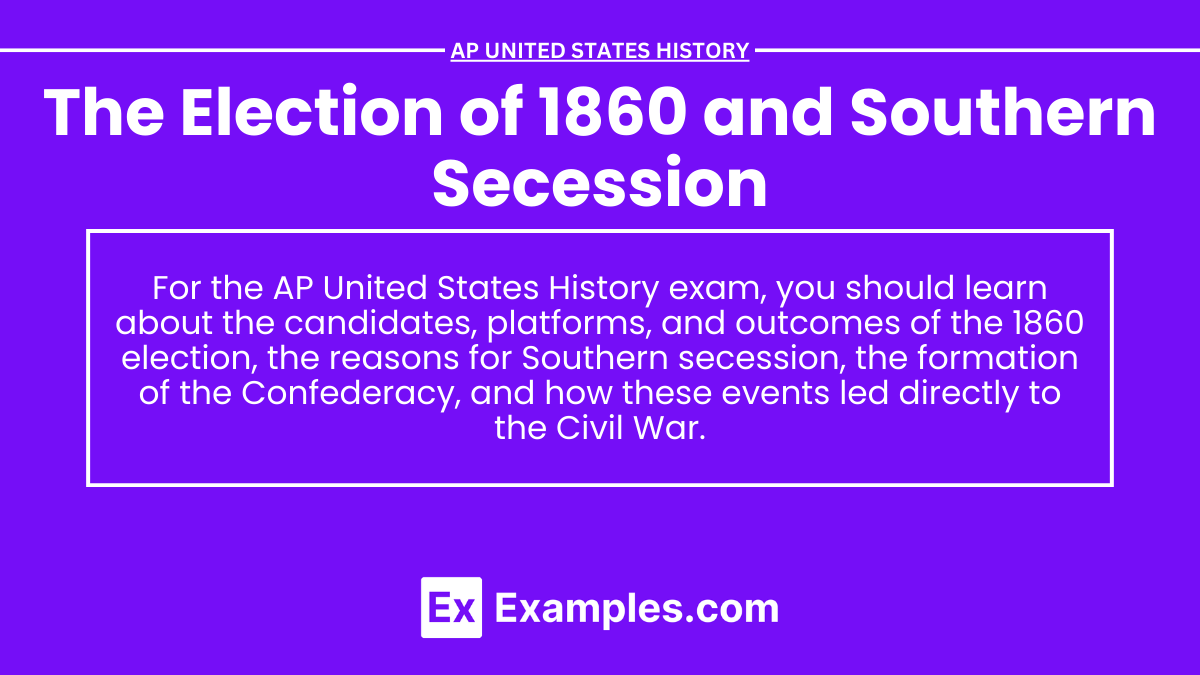In AP United States History, the Election of 1860 and Southern secession represent a critical turning point in the nation’s history, as Abraham Lincoln’s election to the presidency, without any support from Southern states, heightened fears over the future of slavery. This led to the rapid secession of Southern states, beginning with South Carolina, and the formation of the Confederate States of America. The election and subsequent secession were key events that directly precipitated the outbreak of the Civil War.
Learning Objectives
The learning objectives for the topic “The Election of 1860 and Southern Secession” will include the ability to analyze the political and social factors leading to Lincoln’s election, the reasons for the Democratic Party’s split, and the immediate consequences of Southern secession. You will be expected to evaluate how Lincoln’s victory and the South’s response escalated sectional tensions, leading to the outbreak of the Civil War and the formation of the Confederate States of America.
Key Aspects of the Election of 1860
Political Context
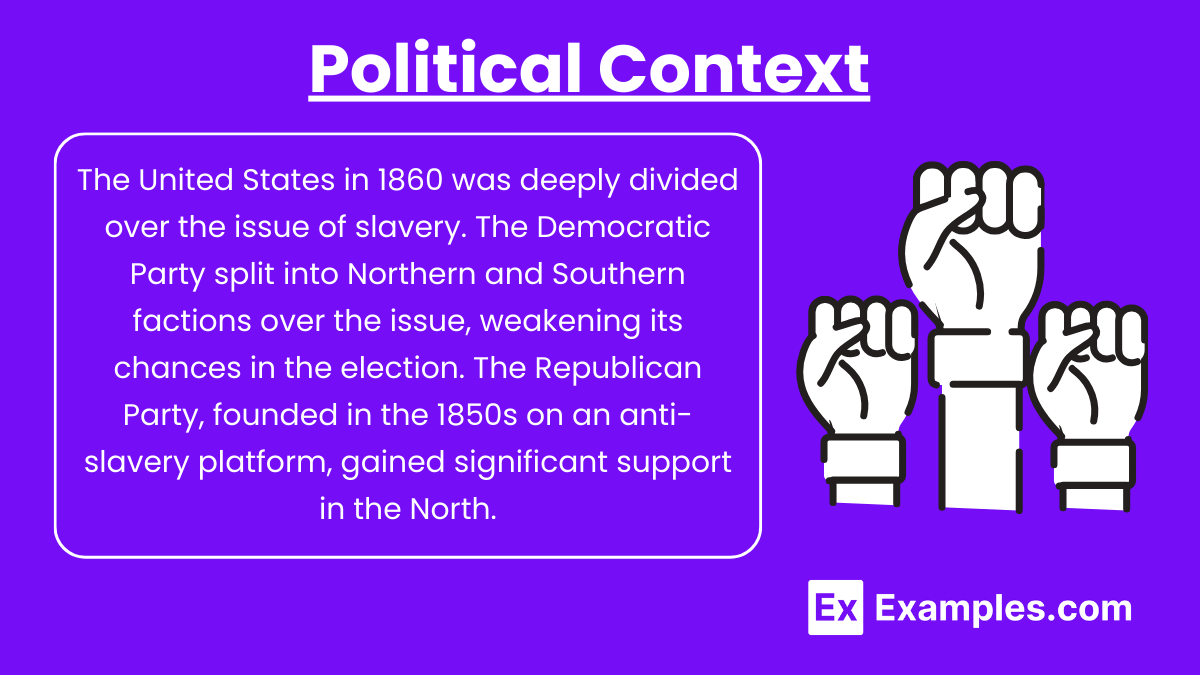
The United States in 1860 was deeply divided over the issue of slavery. The Democratic Party split into Northern and Southern factions over the issue, weakening its chances in the election. The Republican Party, founded in the 1850s on an anti-slavery platform, gained significant support in the North.
Candidates and Platforms
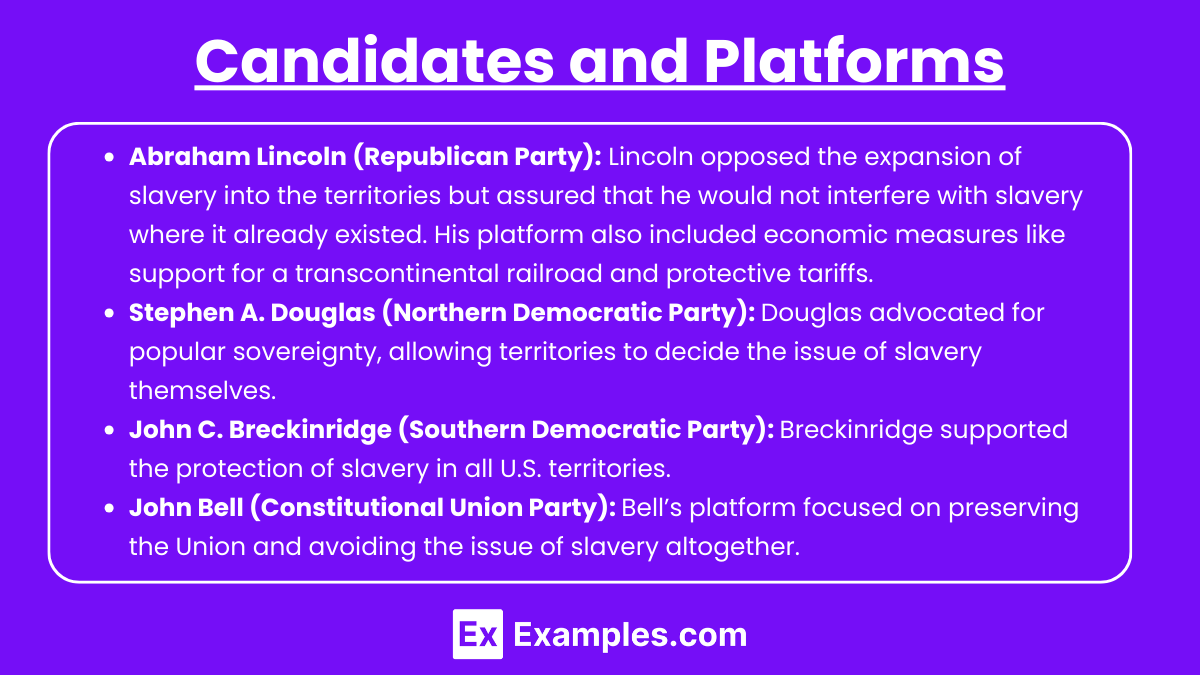
Abraham Lincoln (Republican Party): Lincoln opposed the expansion of slavery into the territories but assured that he would not interfere with slavery where it already existed. His platform also included economic measures like support for a transcontinental railroad and protective tariffs.
Stephen A. Douglas (Northern Democratic Party): Douglas advocated for popular sovereignty, allowing territories to decide the issue of slavery themselves.
John C. Breckinridge (Southern Democratic Party): Breckinridge supported the protection of slavery in all U.S. territories.
John Bell (Constitutional Union Party): Bell’s platform focused on preserving the Union and avoiding the issue of slavery altogether.
Election Results
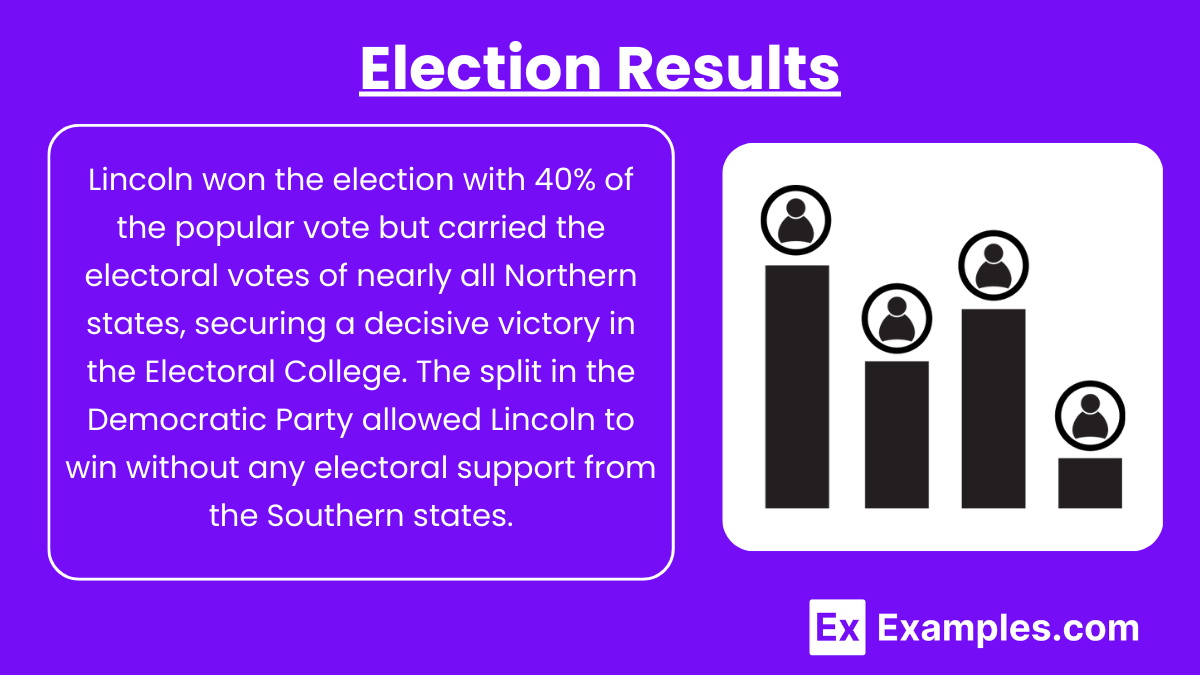
Lincoln won the election with 40% of the popular vote but carried the electoral votes of nearly all Northern states, securing a decisive victory in the Electoral College. The split in the Democratic Party allowed Lincoln to win without any electoral support from the Southern states.
Southern Reaction and Secession
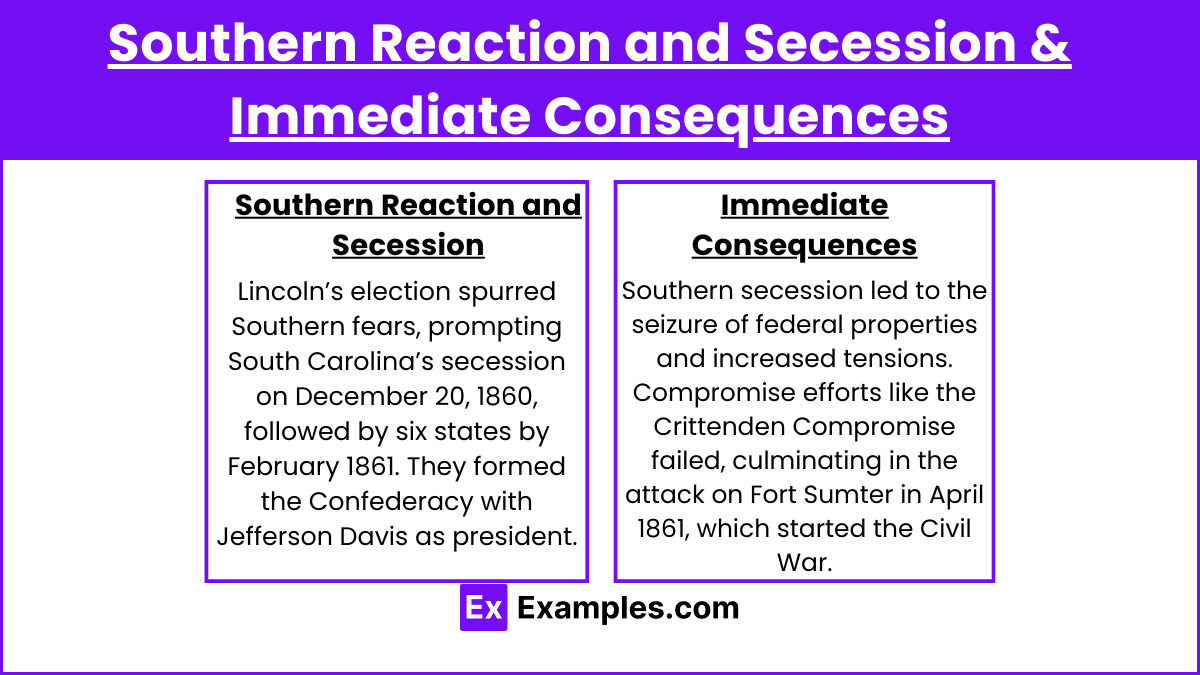
Lincoln’s election was viewed by many Southerners as the final straw in a series of perceived Northern aggressions against Southern interests, particularly slavery. South Carolina was the first state to secede from the Union on December 20, 1860, followed by six more Southern states by February 1861. These states formed the Confederate States of America, with Jefferson Davis as its president.
Immediate Consequences
The secession of Southern states led to the seizure of federal properties in the South and heightened tensions between the Union and the Confederacy. Efforts to reach a compromise, such as the Crittenden Compromise, failed. The situation escalated rapidly, leading to the attack on Fort Sumter in April 1861, marking the beginning of the Civil War.
Examples
- The Republican Platform: The Republican Party’s opposition to the expansion of slavery into the territories was central to Lincoln’s campaign and a key factor in his electoral success.
- Stephen Douglas and Popular Sovereignty: Douglas’s stance on popular sovereignty failed to unite the Democratic Party, contributing to Lincoln’s victory.
- South Carolina’s Secession: South Carolina’s secession following Lincoln’s election was the first in a series of actions that led to the Civil War.
- The Failure of Compromise: The failure of last-ditch efforts like the Crittenden Compromise demonstrated the irreconcilable differences between North and South.
- The Formation of the Confederacy: The rapid formation of the Confederate States of America following the election underscored the Southern commitment to preserving slavery and regional autonomy.
MCQs
- Which event directly followed the election of Abraham Lincoln in 1860?
- A) The Emancipation Proclamation
- B) The Dred Scott Decision
- C) South Carolina’s secession from the Union
- D) The Missouri Compromise
Answer: C) South Carolina’s secession from the Union
Explanation: South Carolina seceded from the Union on December 20, 1860, shortly after Lincoln’s election, marking the beginning of the Southern states’ secession.
- What was a key reason for the Democratic Party’s split in the 1860 election?
- A) Disagreement over economic policies
- B) Differences in foreign policy
- C) Conflicting views on the expansion of slavery
- D) Opposition to the Republican Party
Answer: C) Conflicting views on the expansion of slavery
Explanation: The Democratic Party split into Northern and Southern factions over the issue of slavery, particularly the question of its expansion into new territories.
- Which candidate in the 1860 election ran on a platform of popular sovereignty?
- A) Abraham Lincoln
- B) John Bell
- C) Stephen A. Douglas
- D) John C. Breckinridge
Answer: C) Stephen A. Douglas
Explanation: Stephen A. Douglas, representing the Northern Democrats, supported the idea of popular sovereignty, allowing territories to decide for themselves whether to permit slavery.

